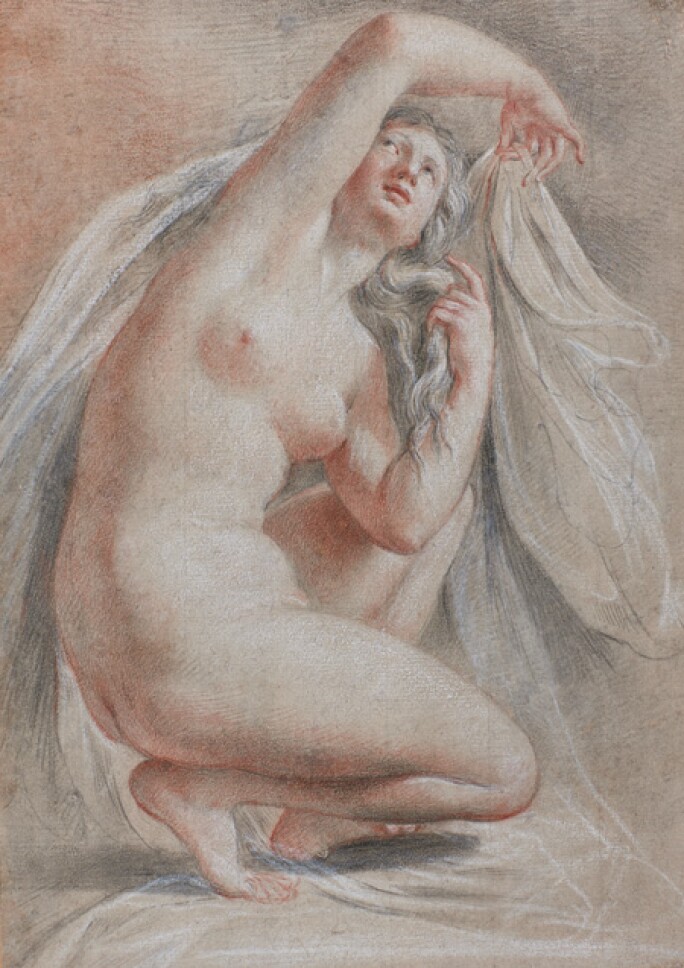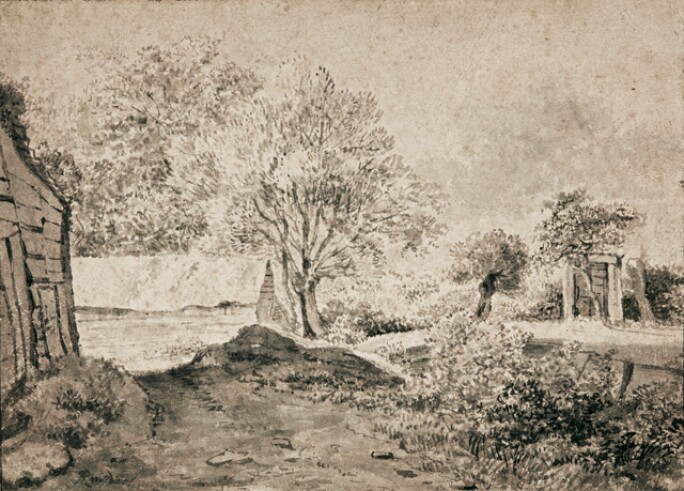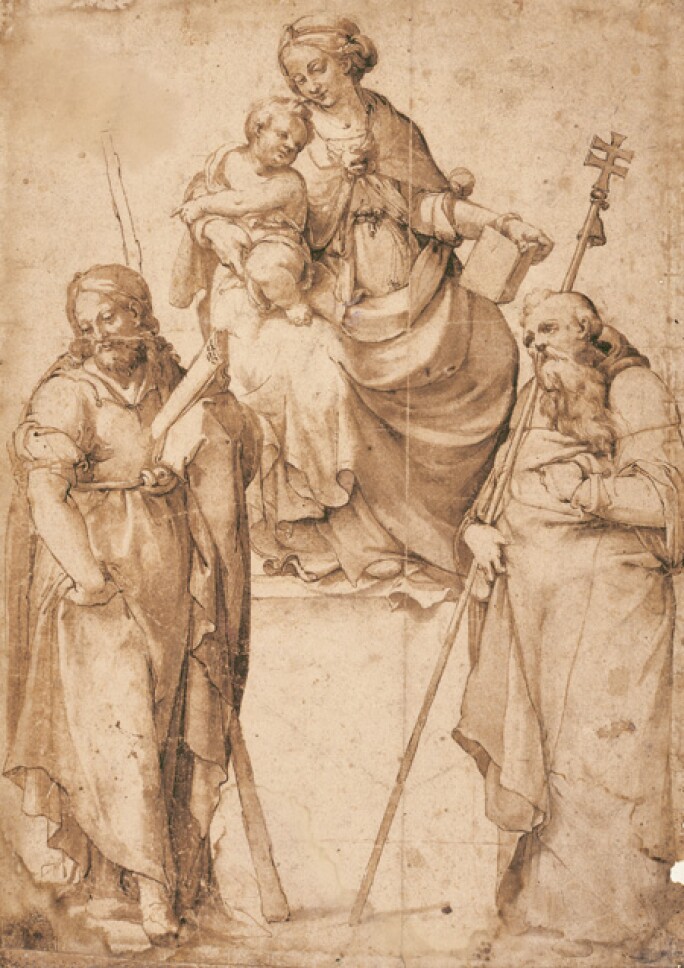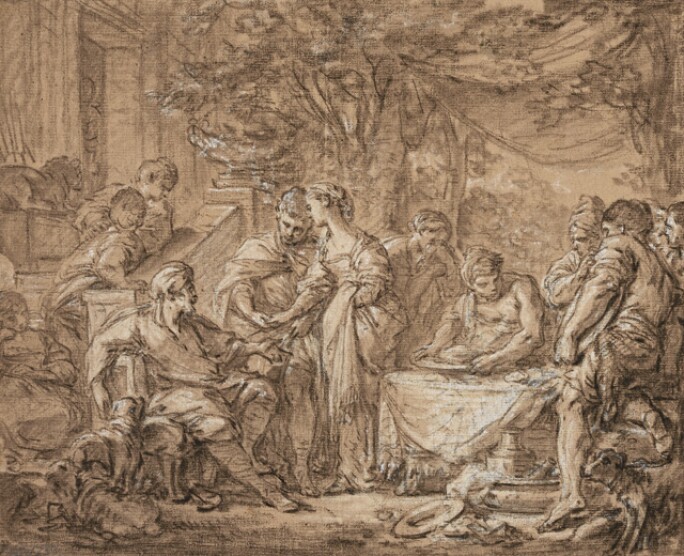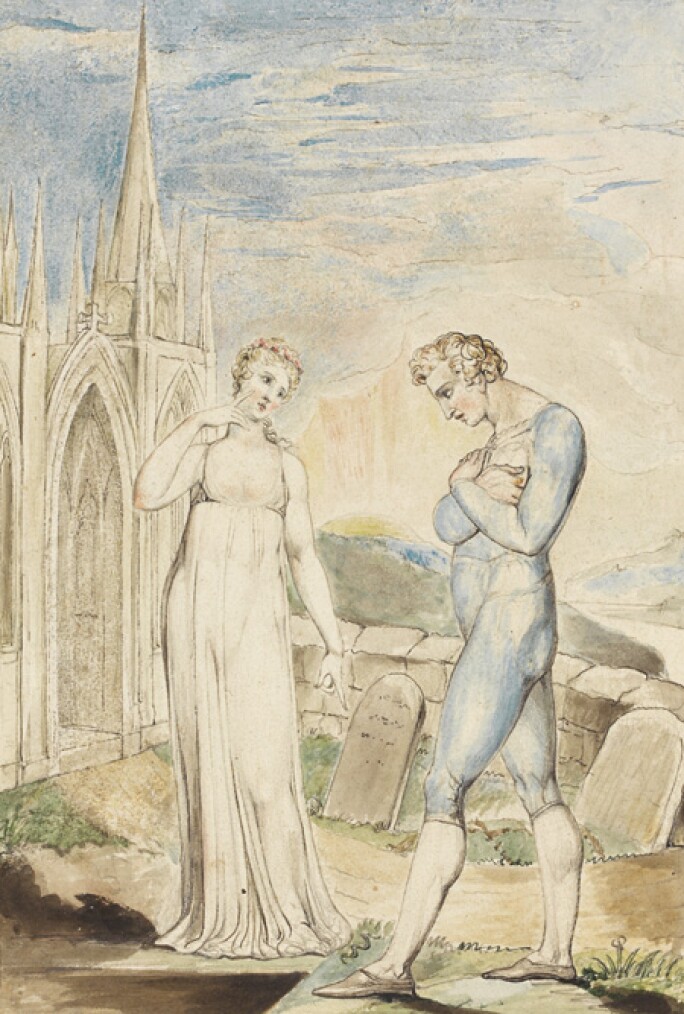I n our instant-access age, when it is easy to think that pretty much all human knowledge is immediately available through a couple of judicious clicks, it is both exciting and refreshing that major artistic discoveries continue to be made with some regularity. In the field of Old Master Paintings and Drawings in particular, lost or previously unknown masterpieces emerge every year, thanks to a magic combination of the level of specialist knowledge needed to identify some of these works correctly, and changes in tastes and fortunes over the centuries, which have caused the works, often correctly identified in earlier times, to slip gently out of public view.
In my specialist area, Old Master Drawings, discoveries are sometimes made simply because the work in question has somehow avoided passing before the right eyes: I think here of the incredibly rare and beautiful drawing by Lucas van Leyden, a colossus of early 16th-century Dutch art, which was brought to me a few years ago by a collector with a finely tuned eye, who had picked it up for next to nothing at a small London dealer. It turned out that over the previous couple of years, this spectacular, characteristic, signed work of the very highest quality, one of only about 35 surviving drawings by a key figure in northern renaissance art, had gone through the hands of two auctioneers and at least one other dealer, without ever being recognised.
Other great drawings are lost from sight not because their owners don’t know what they are, but because the work has been passed down through generations who are not directly involved in the art world, and have no idea of its significance, so they don’t ever happen to mention it to anyone: like the Parisian lady who, when I told her that the drawing she had brought in to show me was a very splendid Canaletto, said ‘Yes, I know, that’s what it says in my great grandfather’s inventaire,’ but who was utterly shell-shocked when I told her it was worth several hundred thousand pounds, and even more shocked when it eventually sold for £1.8 million.
Lastly, there are the drawings that have been seriously misidentified, like the portrait head study that was brought in to Sotheby’s some years ago by a man who had always believed it was a very nice, but not particularly rare, 19th-century work. As my colleague Cristiana Romalli immediately recognised, it was actually a 16th-century masterpiece by Bronzino (it’s now in the Getty Museum).
In every one of our twice-yearly Old Master Drawings sales, there are discoveries of just this type. Not always works that end up being worth millions, but still fascinating, significant drawings. In the New York sale on 25th January 2017, there were tens of excellent drawings, estimated in the $10,000-$100,000 range, which were either newly discovered and previously unidentified, or at the least never before published or seen in public.
One was the substantial, signed landscape drawing by the great Dutch master, Jacob van Ruisdael, which inexplicably passed through a small auction not that long ago, catalogued as ‘Dutch School, 17th century’, with no mention of the signature. Immediately accepted by the leading authority on Ruisdael as a very important discovery, it is one of only five known drawings that the artist signed with his full name, rather than just with his initials, and only the third major, previously unknown drawing by Ruisdael to emerge in the last three decades.
In the Italian field, one of the most important previously unknown drawings in Sotheby's 2017 Old Master Drawings sale was Lelio Orsi’s splendid image of Apollo driving the Chariot of the Sun, drawn around 1544 for the most important commission the artist ever made, his lost fresco decoration on the clock tower of the Piazza del Duomo in the city of Reggio Emilia. Orsi worked hard on this commission, making several versions of the compositional study, but this very free and spontaneous study was entirely unknown until we were asked to look through an album of drawings from the library at Fettercairn House, in Scotland, a collection put together in the 18th and early 19th centuries. Also from Fettercairn came a rare, preparatory study for a painting by another very interesting mid-16th century Italian master, Nosadella, which my colleague Cristiana identified in the time-honoured connoisseur’s way: “Hmmm… I think this drawing looks like a Nosadella – I wonder if there’s anything related in the book on his paintings – ah, yes, there’s the picture: an important early work, with only a few minor compositional differences from the drawing, which is therefore a preparatory study for it.”
Another fine and previously unknown drawing in the sale was the splendid study for a biblical composition, The Marriage of Jacob, by François Boucher – an excellent example of a type of drawing that is very rare in Boucher’s work, which came to us from the estate of a Belgian private collector who had inherited it from her father, and possibly her grandfather. Then there were the two remarkable female nude studies by Sir Thomas Lawrence, again drawings of a type that is most unusual for the artist; these two have been in the ownership of the same family since the 1920s, and have remained completely unknown to scholarship.
Finally, there were two more drawings in this sale, both by William Blake, which are by now fully published, but came to light only relatively recently, as part of one of the great drawings discovery stories of the last couple of decades: in 2001, a leather-bound portfolio was found in a small Glasgow bookshop, containing 19 perfectly preserved watercolours by Blake, his designs for the illustrations to an epic poem, The Grave, by Robert Blair. The images were known from the prints contained in the published volume, but no-one knew that Blake’s wonderful preparatory drawings for these illustrations had survived. The drawings were auctioned by Sotheby’s in New York on 2nd May 2006, and several of them were acquired by major museums.
All these examples only go to show how relatively frequently exciting ‘new’ old drawings come to light, and the challenges of correctly identifying them and locating them within the works of the artists in question is one of the most challenging and satisfying things about the Old Master Drawings field.
Do you have a family treasure you would like to have valued? Request an estimate.


